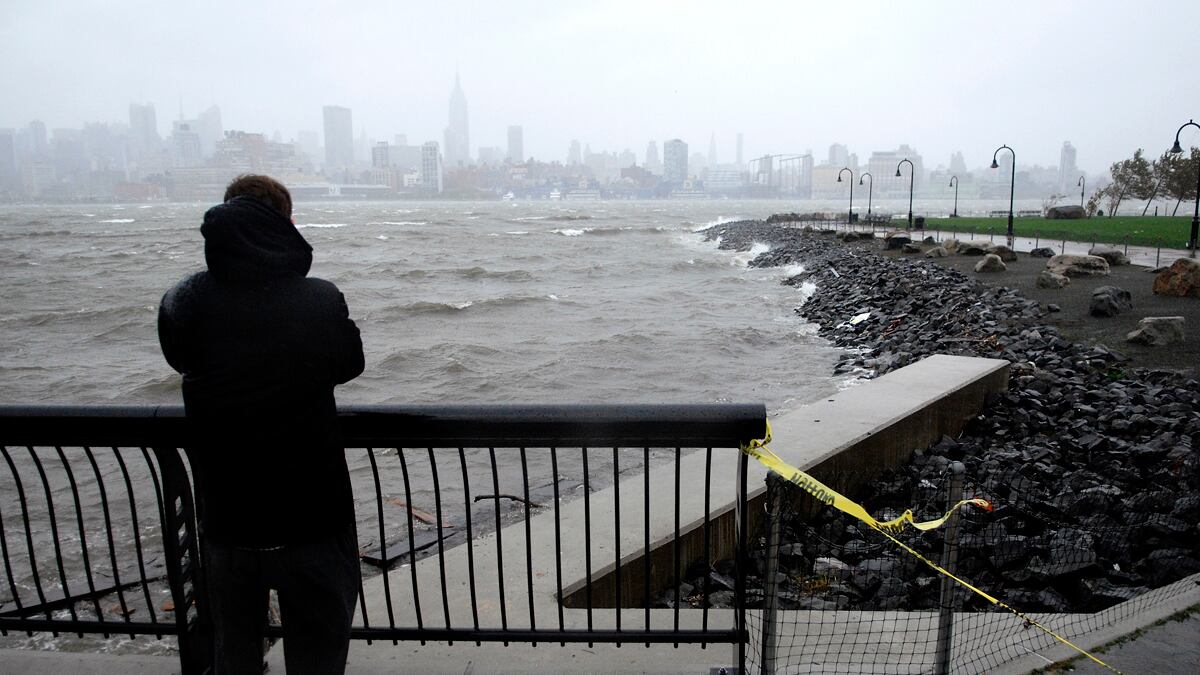With Sandy bearing down upon us, many people are worried important things: Will work be canceled tomorrow? What about the elevators—will I have to hoof it up nine flights to get home? And what if cable service gets screwed up and I miss the next episode of Homeland?

Not small issues to be sure, but way off the mark. What we all should be worrying about is plumbing. It’s not the water lashing the beaches that matters; it’s the water in your faucet and toilet.
Here’s a simple example of why. In April 1993, 400,000 people in Milwaukee (total population: 1.6 million) became ill from an intestinal microbe, cryptosporidium, courtesy of contaminated drinking water. Each developed a week-plus of diarrhea and general intestinal misery; of them, more than 100, all with abnormal immune systems, died. How and why did it happen? Bad plumbing. The city’s water filtration system, which took Lake Michigan water and (allegedly) filtered it clean, failed for some reason—and cryptosporidium entered the water supply, then people’s stomachs. Perhaps the spring rains overwhelmed the filtering capacity. Perhaps an unusually large run-off of cryptosporidium from the excrement of various local farm animals spiked the lake. Perhaps this, perhaps that but the skinny was that too much water passed across filters built to handle most of the contaminations most of the time—but not all the super extreme oh-my-god contaminations all of the time—and predictably failed.
More than email or mass transit or your favorite diner, all of urban life depends on plumbing—defined in practical terms as the effective provision of clean water for drinking and the regular removal of waste to a place nowhere near the source of clean water. The ancient Romans with their Cloaca Maxima were able to rule the world because of their attention (OK, obsession) to this elemental fact. Pliny the Elder considered their plumbing to be the greatest accomplishment of the Roman Empire. Clean in and waste out, in and out, in and out—that’s how civilization grows. Societies that accomplish this flourish while those that cannot generally struggle to move beyond the most rudimentary hand-to-mouth subsistence.
Yet most of today’s survival tips out there have only to do with keeping your food from spoiling or your ice icy. Sure, food is mighty important, but food is easy. No one will starve here (except those inexplicably ignored persons who already are starving). We might suffer through—gasp—some days of dull cuisine, stuck with goodies like PBJ on white bread, scrambled eggs for dinner, or boiled noodles with ketchup. Tough, I know. But the problem is not one of food shortages but, alas, one of excrement. Raw sewage. Shit. In your water supply.
The usual sequence when the water supply is disrupted is to use bottled water. In resource-strapped countries like Haiti after the earthquake or in New Orleans after Katrina, the clean bottled water runs out or isn’t supplied widely and consistently enough. And similar to those two now-legendary disasters, if the pipes are not fixed and a return to faucet-based life restored, infections begin. People drinking dirty water contaminated with, say, cryptosporidium or cholera or E coli, or whatever extra awful microbe is around. It kills thousands after every major natural disaster, unless the old in-with-the-fresh, out-with-the-waste rhythm of the Cloaca Maxima can be restored.
With 11 feet of water set to crash onto the shore-hemmed city of New York, what assurances do we have that New York City will not become Milwaukee-by-the-sea or, more disturbing, something like Port-au-Gotham? Plenty—New York City and, I suspect, other urban centers, has a forward-thinking approach to the water supply informed with hard-earned lessons from Haiti and New Orleans. New Yorkers use 1.3 billion gallons of water each day, sending it downstream across 7,400 miles of sewer pipes. That’s about 160 gallons per head per day. The Department of Sanitation sees it in basic terms: fresh water in (mostly from the lakes and reservoirs) and used water out. Logic and civic planning prevail. This is your government actually working (!).
When this all settles, hopefully soon, much attention will be given to how quickly communities get back to normal. There will be tragic stories and heart-warming stories and everything in between. Each political side will try to make hay out of the disaster by pointing out various “heckuva job, Brownie” screwups, past and present. But what won’t be covered is a discussion of how quickly cities regain their balance compared with small towns and rural areas. My guess is that cities will be far ahead and not just because they have the dough.
Yes, cities—those reviled warts on the American imagination, the ancient sources of all sin and fornication. Cities, unlike other places, are built for people to live in—and they are built to last. The government, that other major wart, has a clear and present role in their functioning, hiring the guys who are measuring coliform content in the water right now and making the decisions about what to do next. More than anything else, Sandy—or any natural disaster—reminds us just why and how government exists, why taxing and spending are necessary, and the forcefulness of that forgotten virtue, the common interest.






